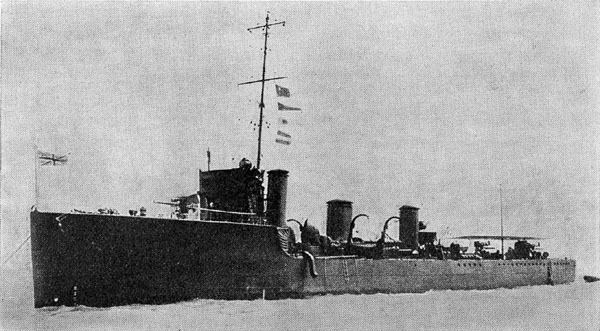Built 1912–1913 | Succeeded by L class In commission 1912–1923 | |
 | ||
The Acasta class (in September 1913 re-designated the K class) was a class of twenty destroyers built for the Royal Navy under the Naval Programme of 1911 - 1912 that saw service during World War I. They were the last class of Royal Navy destroyers to have mixed names with no systematic theme (see naming conventions for destroyers of the Royal Navy for more information.) When the class was designated as "K", names beginning with that letter were allocated to the ships but never used. The class saw extensive wartime service and seven were lost, including four at the Battle of Jutland.
Contents
Design
The Acastas were larger and heavier armed than the preceding H and I classes (Acorn and Acheron, respectively), displacing about 25% more and with the mixed calibre armament replaced with a uniform fit of QF 4-inch guns, which the Acastas introduced. Previous 4-inch (102 mm) weapons had been of the breech-loading (BL) type. The guns were shipped one each on the forecastle and either side abreast the after torpedo tube (or amidships before and after the tube in some ships.) All ships had three funnels, the foremost being tall and narrow, the second short and wide and the third level with the second but narrower. The foremost torpedo tube was sited between the second and third funnels, a distinctive feature of this class.
There were twelve 'standard' vessels built to a common Admiralty design, and eight builders' specials that (except for Garland) had a shorter, less beamy hull; five of the latter were from Thornycroft with 22,500 shp (16,800 kW) (one of Thornycroft's ships, Hardy, was planned to diesel cruising motors, but these were not ready in time and Hardy was completed with Thornycroft's standard machinery). One by Parsons (Garland) had semi-geared turbines giving a speed of 31 knots (57 km/h; 36 mph) on trials, with a seventh from Fairfields had a clipper bow. The eighth 'special' was Ardent by William Denny, Dumbarton, which was built using longitudinal framing rather than conventional transverse framing. While Ardent's novel construction seems to have been a success, no more destroyers were built for the Royal Navy using longitudinal framing until the J-class destroyers in the 1930s.
Service
At the outbreak of World War I until mid-1916, the Acastas were serving in the Grand Fleet as the 4th Destroyer flotilla, with Swift as leader. By the time of the Battle of Jutland the leader was the Faulknor-class leader Tipperary, with Ardent, Fortune, Shark and Sparrowhawk lost in the course of the battle and Acasta was so badly damaged that she had to be practically rebuilt. After Jutland the remainder of the flotilla moved to the Humber and then to Portsmouth by the end of 1916, before dispersing, some ships to the 6th Destroyer Flotilla and the Dover Patrol and the remainder to Devonport. All survivors of the war were sold out of service for scrapping by 1921.
